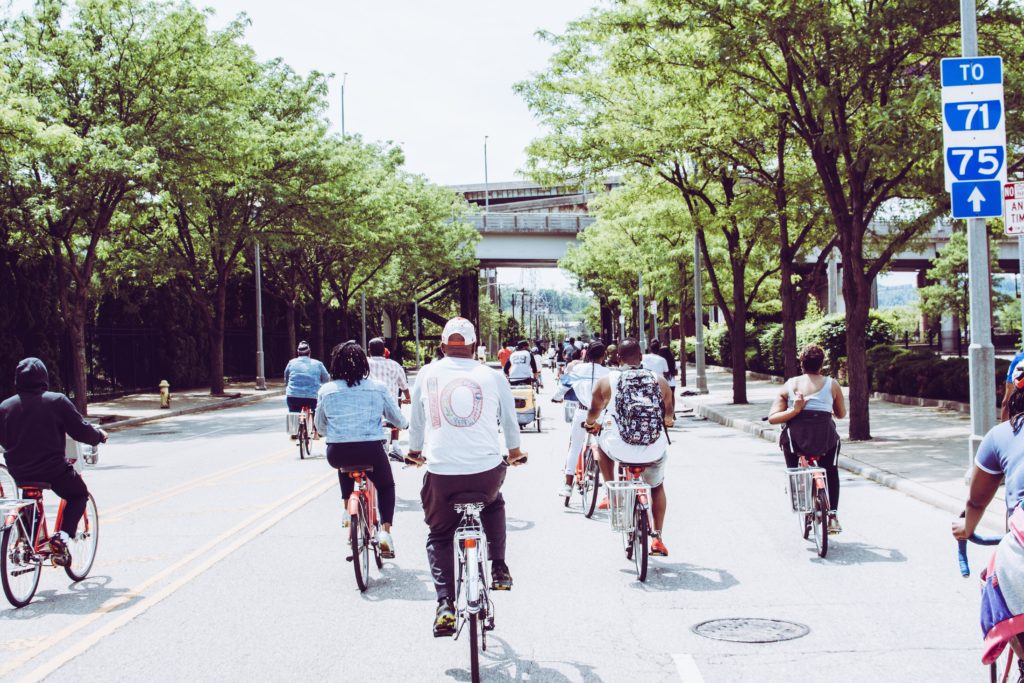WORLD HEALTH DAY: CLIMATE CHANGE AND HEALTH

Under the motto “Climate Change and Health”, the WHO is celebrating this year’s World Health Day on April 7. Our new team member Hannah asks how exercise and climate change are connected and whether we can even make a small contribution to climate protection with the Leicht Bewegt program.
Climate change is having an increasingly noticeable impact – just think of the increase in extreme weather events. This does not leave our health untouched either, as periods of intense heat, for example, challenge our cardiovascular system. No wonder, then, that this year’s World Health Day runs under the motto “Our planet, our health.” Our health is influenced by the state of health of our planet.
The health “side effects” of climate protection
Climate protection measures are, of course, primarily aimed at protecting the climate. But some of them also result in a benefit for our health, as a positive “side effect” so to speak. These are known as health co-benefits.The first example of this can be found in urban planning. For example, if there are parks in a city, the plants present improve the air quality. At the same time, the park invites people to more exercise and interpersonal interaction, such as a leisurely walk during lunch break or a little chat with a neighbor. Cities like Copenhagen or Amsterdam also show how much influence urban planning has on our everyday activities. The infrastructure of these cities is more strongly designed for bicycle traffic and, accordingly, people there also use their bicycles more often instead of driving their cars. In Copenhagen alone, an impressive 1.27 million kilometers are covered by bicycle every day.
Mobility and climate
Let’s stay a little longer with the topic of movement and mobility because movement is not only a strong argument for health but also for the climate since transport and traffic play a decisive role here too. The emissions caused by motorized traffic are not the only problem. Noise, air pollution, and accidents are also consequences of dense, motorized traffic.
At this point, as you might have guessed, our beloved topic of “movement” comes into play: because walking or cycling have decisive advantages over the motorized, passive transport of driving a car.
Direct effects on our health
For our health, active transportation, such as walking or cycling, is a great benefit in two respects. When we bike or walk, even just the distance to the bus stop, it has direct effects on our bodies. These effects occur even for short distances (read more)!
Even through simple everyday exercise, we can reduce the risk of a variety of chronic diseases, such as diabetes and cardiovascular disease, and contribute to healthy body weight. And don’t even get me started on the alertness with which you arrive at the office cycling. I’m pretty convinced (and unlike the other points, there’s no scientific evidence) that in addition to CO2, you’ll save at least a cup of coffee a day if you bike to work…
Indirect effects on our health
But physical, active travel also has an indirect effect on our health. This is because when we cycle or walk, we do not cause any climate-damaging pollutant emissions.
The more people decide to give up their exhaust-emitting cars and instead travel actively, the more likely it is that air quality will improve. The following figure illustrates why this is so crucial: every year, around 3 million people currently die prematurely as a result of air pollution.
In the U.S., researchers took a closer look at how much emissions are reduced when walking and biking replace driving. They were able to show that increasing walking and biking from an average of 4 minutes a day to 22 minutes a day reduced greenhouse gas emissions by 14%. If you want a quick overview of your carbon footprint yourself, you can, for example, use this quick check from the German Federal Environment Agency: https://uba.co2-rechner.de/en_GB/
I think the value of everyday movement is often underestimated. Maybe because, unlike the gym and sports club, we don’t pay anything for it and don’t take any extra time for it, but it just happens (or doesn’t happen) incidentally and habitually. With Leicht Bewegt, we encourage office workers to move more in their daily work routine and to accept distances as movement challenges. In doing so, we are doing something good for our planet and ourselves. An absolute win-win strategy, if you ask me!
